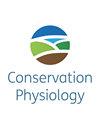西澳大利亚野生卡纳比凤头鹦鹉(Zanda latirostris)雏鸟的健康参数:长期研究的结果
IF 2.6
3区 环境科学与生态学
Q2 BIODIVERSITY CONSERVATION
引用次数: 0
摘要
收集基准健康数据是濒危物种保护计划的重要组成部分。与许多野生动物一样,濒危物种卡纳比凤头鹦鹉(Zanda latirostris)野生种群的健康数据极少。在这项研究中,我们从该物种分布区的 9 个繁殖地采集了 426 只野生卡纳比凤头鹦鹉雏鸟的样本,历时 11 年。除体格检查外,还采集了样本以检测血液学和生化指标、鹦喙和羽毛病病毒(BFDV)、禽多瘤病毒(APV)、鹦腺病毒、鹦疱疹病毒、衣原体、疾病血清学和内寄生虫。对环境进行采样,以筛查巢穴中的 BFDV 和 APV。报告中提供了该物种雏鸟的描述性健康数据,包括 BFDV、APV 和衣原体感染。提供了三个年龄组的血液学和生化参数参考区间,并讨论了影响血液分析物和身体状况指数的因素。该纵向数据集有助于深入了解卡纳比凤头鹦鹉雏鸟的健康参数,并为今后监测繁殖种群提供参考。本文章由计算机程序翻译,如有差异,请以英文原文为准。
Health parameters for wild Carnaby's cockatoo (Zanda latirostris) nestlings in Western Australia: results of a long-term study
The collection of baseline health data is an essential component of an endangered species conservation program. As for many wildlife species, there are minimal health data available for wild populations of the endangered Carnaby’s cockatoo (Zanda latirostris). In this study, 426 wild Carnaby’s cockatoo nestlings were sampled from nine breeding sites throughout the range of the species over an 11-year period. In addition to a physical examination, samples were collected to test for hematologic and biochemical parameters, psittacine beak and feather disease virus (BFDV), avian polyomavirus (APV), psittacine adenovirus, psittacine herpesvirus, Chlamydia, disease serology and endoparasites. Environmental sampling was performed to screen for BFDV and APV in nest hollows. Descriptive health data are presented for nestlings of this species, with BFDV, APV and Chlamydia infections reported. Reference intervals for hematologic and biochemical parameters are presented in three age groups, and factors affecting blood analytes and body condition index are discussed. This longitudinal dataset provides insights into health parameters for Carnaby’s cockatoo nestlings and a reference for future monitoring of breeding populations.
求助全文
通过发布文献求助,成功后即可免费获取论文全文。
去求助
来源期刊

Conservation Physiology
Environmental Science-Management, Monitoring, Policy and Law
CiteScore
5.10
自引率
3.70%
发文量
71
审稿时长
11 weeks
期刊介绍:
Conservation Physiology is an online only, fully open access journal published on behalf of the Society for Experimental Biology.
Biodiversity across the globe faces a growing number of threats associated with human activities. Conservation Physiology will publish research on all taxa (microbes, plants and animals) focused on understanding and predicting how organisms, populations, ecosystems and natural resources respond to environmental change and stressors. Physiology is considered in the broadest possible terms to include functional and mechanistic responses at all scales. We also welcome research towards developing and refining strategies to rebuild populations, restore ecosystems, inform conservation policy, and manage living resources. We define conservation physiology broadly and encourage potential authors to contact the editorial team if they have any questions regarding the remit of the journal.
 求助内容:
求助内容: 应助结果提醒方式:
应助结果提醒方式:


